Termite Damage Drywall: My Experience Identifying and Repairing It
Termite damage drywall can be a nightmare for homeowners. I’ve seen the destruction these pests can cause, turning a beautiful living space into a crumbling mess, especially with possible termite infestation, old termite damage, and an indoor termite swarm from hungry termites. It’s shocking how quickly they can chew through wood and drywall, leaving behind costly repairs, headaches, and old termite damage like holes and drywood termite droppings that termite experts must address.
Ignoring the signs of infestation only makes matters worse. I’ve learned that early detection, like a termite inspection by a termite inspector, is crucial to saving both time and money, especially when dealing with old termite damage on paper. Understanding the warning signs, such as old termite damage on the wall and knowing what to look for on paper, can make all the difference. In this post, I’ll share my insights on identifying termite damage in drywall and how to tackle it effectively. With the right approach, you can protect your home and restore its beauty, wall included.
Key Takeaways
- Regularly inspect your drywall for signs of termite damage, such as small holes or soft spots, to catch infestations early.
- Familiarize yourself with the visual signs of termites on the wall, including mud tubes and discarded wings, to identify potential problems quickly.
- Understand that termites feed on cellulose found in wood and drywall, making it essential to monitor areas where these materials are present.
- Be aware of the different types of termites that can affect your home, such as subterranean and drywood termites, which can damage your wall, to tailor your prevention strategies effectively.
- Recognize the risks of undetected termite damage in the wall, which can lead to costly repairs and negatively impact your home’s value and safety.
- Implement preventive measures like sealing wall cracks and reducing moisture to protect your home from future termite infestations.
Recognize Termite Damage in Drywall
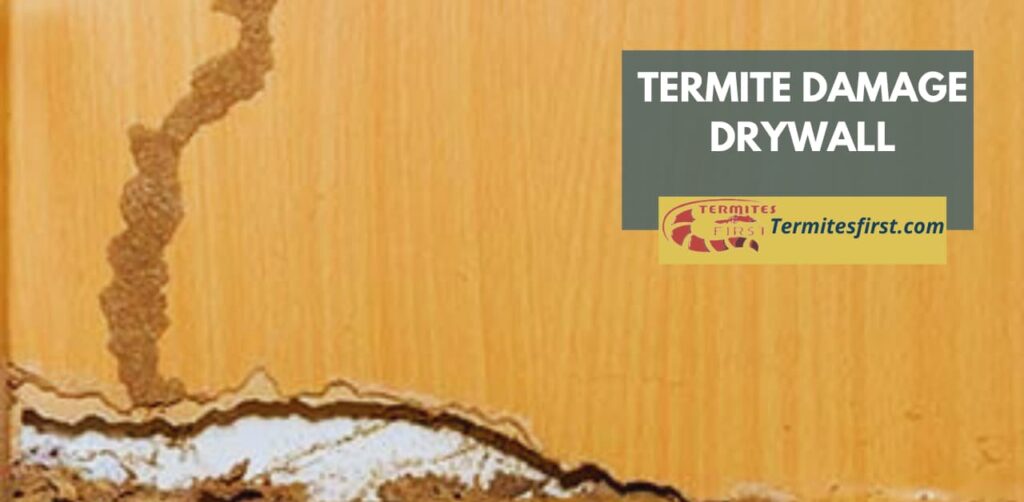
Identifying Termites
Small pinholes in drywall can indicate termite activity. These holes in the wall are often the entry points for drywood termites. I remember my friend showing me similar holes in her living room wall. At first, we thought it was just damage from a nail in the wall, but it turned out to be termites.
Another sign of infestation is dirt or dust around these wall holes. This dirt often comes from termite droppings. Drywood termite droppings look like tiny pellets and can pile up near infested areas, especially on the wall. If you notice any unusual dust on the wall, check for further signs of termites.
Tunneling Signs
Faint lines on the surface of drywall may suggest tunneling by termites. These lines appear as thin grooves or trails. They form when termites chew through the wood behind the drywall. I once found these lines while inspecting my basement. It was unsettling to see how much damage they could cause to the wall without being noticed.
These tunnels can weaken the structure of your home. The longer you wait to address them, the worse the wall damage becomes. Early identification is crucial for effective treatment.
Structural Issues
Jammed doors or windows can also signal potential termite damage in drywall. When termites eat away at the wall wood, they can alter its shape or integrity. I have seen friends struggle with doors that won’t close properly due to hidden termite issues in the wall.
If you find that doors stick or windows won’t open smoothly, inspect nearby walls for signs of termites. Look for any small holes in the wall, dirt, or faint lines mentioned earlier.
Personal Experience
In my own home, I had a close call with drywood termites in the wall. I noticed some pinholes in the wall and thought nothing of them at first. After doing some research, I realized those signs on the wall were serious warnings. Thankfully, I called an expert before it got worse.
Understanding these signs can save you time and money. Regular inspections can help catch infestations early. You can protect your home by staying vigilant and knowing what to look for.
Visual Signs of Termite Presence
Unusual Patterns
Look for unusual patterns in your drywall. Small holes or tunnels may indicate potential termite activity. I once noticed tiny pinholes in my wall. At first, I thought they were just from a nail, but later discovered they were signs of termites. These holes are often created by worker termites as they tunnel through the wood.
Inspecting the wall’s surface can reveal more clues. If you see bulges or soft spots, these may signal severe termite infestation. The damage can be extensive if left unchecked. Termites eat through the wood, weakening its structure over time.
Water Damage Signs
Check for signs that resemble water damage. This can be misleading but often indicates subterranean termite colonies at work. I’ve seen walls that looked damp, only to find out it was from termites eating away at the drywall behind it. This kind of damage can mimic leaks or moisture problems.
The paint may bubble or peel in affected areas. This happens when termites cause structural damage and moisture builds up beneath the surface. It’s essential to investigate further if you notice these signs.
Wallpaper Examination
Examine your wallpaper closely for any peeling or bubbling. These issues often suggest underlying termite damage. I remember peeling back some wallpaper in my home and discovering the drywall was crumbling underneath. That was a clear sign of a termite invasion.
Termites can create spaces between the drywall and wallpaper as they feed on the material behind it. This can lead to further damage if not addressed quickly.
Termite Droppings
Look for termite droppings, also known as frass. These small pellets are a direct sign of a termite infestation nearby. They often appear near areas where termites are active. I found some droppings near my baseboards once, which prompted me to call for a free termite inspection right away.
Finding these droppings is crucial because they indicate that many termites are present in your home. Ignoring them can lead to significant structural issues down the road.
Indoor Swarms
Be alert for indoor swarms of flying termites, especially during springtime. This behavior usually signals that a termite colony has matured and is looking to expand. I witnessed this firsthand when swarms appeared in my living room one evening, prompting immediate action.
If you see swarming termites inside your home, it’s vital to act quickly. Call a professional for a thorough termite inspection to assess the situation accurately.
Understand Termite Feeding Habits
Hungry Termite
Termites are hungry creatures. They primarily feed on cellulose, which is found in wood and drywall materials. This diet makes them a threat to homes. I have seen firsthand how quickly they can damage structures. A small colony can consume a significant amount of wood in just a few months.
These pests are always searching for food. Their feeding habits allow them to thrive in various environments. I remember when I discovered termite damage in my own home. It was alarming to see how much destruction they could cause without being noticed.
Subterranean Termite
Subterranean termites are the most common type in the United States. They live underground and build mud tubes to access their food sources. These tubes help them stay moist while they travel from their nests to the wood above ground.
This type of termite can cause severe damage over time. They often invade foundations, making it difficult to detect their presence until significant harm has been done. The size of their colonies can reach thousands or even millions of individuals, leading to extensive damage if left unchecked.
Termite Activity
Termite activity varies by season and location. In warmer months, they are more active and can be seen foraging for food. During this time, homeowners should be vigilant. I learned that spotting signs of termites early can save you from costly repairs later on.
Signs of termite activity include mud tubes, discarded wings, and termite feces. These droppings look like tiny pellets and can indicate an infestation. Recognizing these signs early is crucial for effective treatment.
Type of Termites
There are different types of termites that affect drywall differently. Drywood termites infest wood directly without needing contact with the soil. They create small holes in the wood as they feed inside.
In contrast, subterranean termites require moisture from the ground to survive. They often tunnel through walls and can damage drywall extensively over time. Understanding these types helps homeowners identify potential threats.
Damage Over Time
Termites can cause significant damage if not detected early. A small infestation can quickly grow into a major problem. I’ve seen cases where entire walls had to be replaced due to neglecting early signs of termite activity.
Regular inspections can help prevent severe damage. Homeowners should check for signs of termites at least once a year. Early detection is key to protecting your home from these destructive pests.
Types of Termites Affecting Drywall
Subterranean Termites
Subterranean termites live underground. They create tunnels to reach food sources like wood and drywall. This type of termite is the most common in many homes. They need moisture from the soil to survive. I once found a small mud tube in my basement, which led me to discover a hidden infestation.
These termites can cause significant damage. They eat through wood, drywall, and other materials. Their colonies can grow large, making them a serious threat. Homeowners should regularly check for signs of these pests. Mud tubes are a clear indicator of their presence. If you see one, act quickly to prevent further damage.
Drywood Termites
Drywood termites are different from subterranean ones. They infest wood directly without needing soil contact. This makes them a unique threat to drywall and furniture. These termites can enter through small cracks or gaps in your home’s exterior.
I learned that drywood termites can live inside wood for years before causing noticeable damage. They do not require moisture from the ground, which allows them to thrive in dry environments. Their ability to survive without soil makes them harder to detect early on.
Damage Comparison
Both types of termites can cause extensive damage to homes. However, their behaviors and habitats differ significantly. Subterranean termites often attack at the foundation level. In contrast, drywood termites may target wooden structures higher up in a house.
The damage caused by subterranean termites often starts at the base of walls or floors. This can lead to structural issues if not treated promptly. On the other hand, drywood termites may leave behind small piles of fecal pellets as evidence of their presence.
Prevention Tips
Preventing termite damage requires vigilance and proactive measures.
- Inspect your home regularly for signs of infestation.
- Seal cracks and openings in your home’s exterior.
- Maintain proper drainage around your foundation.
- Store firewood away from your home.
Taking these steps can help protect your home from both types of termites. I make it a habit to inspect my house every spring as part of my routine maintenance.
Risks of Undetected Termite Damage
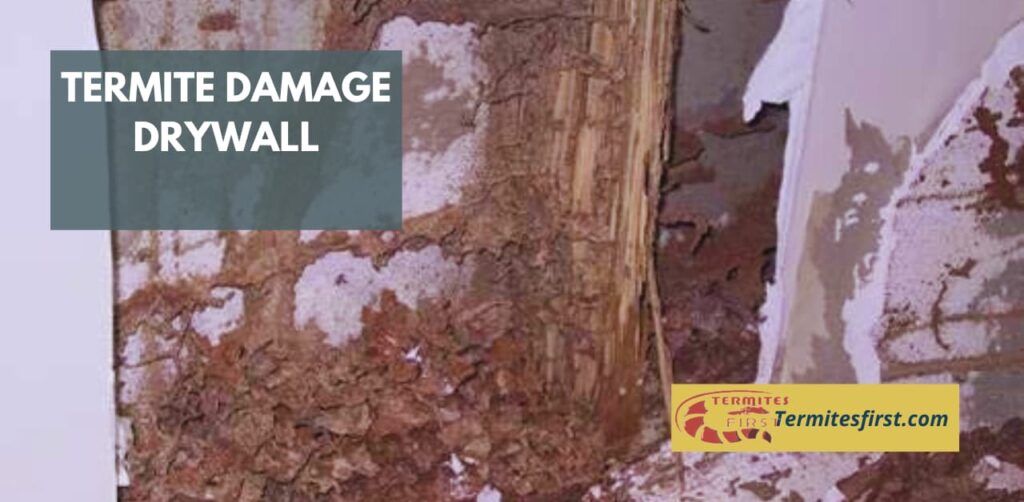
Structural Instability
Undetected termite damage can lead to major termite damage over time. When termites eat through drywall, they weaken the structural integrity of walls and ceilings. I have seen homes where the damage was so severe that entire sections had to be rebuilt. This kind of repair is costly and time-consuming.
Prolonged infestations create hidden problems. Termites often work silently, making it hard for homeowners to notice their presence. By the time signs appear, significant damage may already be done. For example, sagging ceilings or cracked walls can indicate serious issues caused by termites.
Costly Repairs
Repairing termite-infested drywall can become a financial burden. Costs can escalate quickly if the infestation is not controlled early on. I remember a friend who faced thousands in repairs because he ignored small signs of damage. He wished he had acted sooner.
The longer termites remain undetected, the more extensive the damage becomes. Homeowners might find themselves replacing entire sections of drywall instead of just patches. This can multiply repair costs significantly.
Compromised Integrity
The integrity of your home relies on solid walls and ceilings. Termites compromise this integrity when they go undetected for too long. They often target areas that are difficult to inspect, such as behind furniture or inside walls.
Once the infestation spreads, it becomes harder to control. Early detection plays a crucial role in preventing further damage. Regular inspections help identify potential issues before they escalate into major problems.
Importance of Early Detection
Early detection is key in minimizing termite damage and repair costs. Homeowners should stay vigilant for signs of infestation, such as mud tubes or droppings. I recommend checking these areas regularly to catch any problems early.
An annual inspection by a pest control professional can also help identify issues before they worsen. Professionals have tools and experience to spot signs that may go unnoticed by untrained eyes.
Control Measures
Controlling termite populations requires proactive measures. Homeowners should implement preventive strategies to avoid infestations altogether. Keeping wood away from moist areas and sealing cracks can deter termites from entering.
If an infestation occurs, immediate action is necessary. Treatments like bait systems or liquid insecticides can effectively eliminate termites. However, these methods work best when deployed early in the infestation process.
Impact on Home Value and Health
Property Value
Termite damage can greatly reduce a home’s value. Buyers often hesitate to invest in properties with visible issues. They worry about the cost of repairs and potential future damage. I remember viewing a house once that had clear signs of termite activity. The seller had to lower the price significantly because of it.
The presence of termites creates doubt in prospective buyers’ minds. They may think about the long-term implications of such damage. This concern can lead to lower offers or no offers at all. Homes with untreated infestations may sit on the market longer, increasing frustration for sellers.
Health Risks
Untreated termite infestations can also pose health risks. Moisture from their activity can lead to mold growth. Mold thrives in damp areas, creating an unhealthy living environment. It can cause respiratory issues and other health problems for residents.
I once learned about a family that suffered from allergies due to mold in their home. They discovered it was linked to a hidden termite issue. This experience highlighted how important it is to address any signs of damage quickly.
Deterred Buyers
Potential buyers may be deterred by visible signs of termite damage. Cracked walls or sagging ceilings indicate serious issues. These signs suggest that the home has not been well-maintained. Many buyers prefer homes that require no immediate repairs.
The presence of termite damage raises red flags during inspections. Inspectors often recommend further evaluation if they find any signs. This can scare off buyers who do not want to deal with potential complications.
Long-Term Consequences
Ignoring termite damage can lead to significant long-term consequences. The cost of repairs can escalate quickly if left untreated. Homeowners may face extensive structural repairs and replacement costs for affected materials.
I have seen estimates for repairing termite-damaged drywall range widely, sometimes reaching thousands of dollars. This expense adds up quickly, especially if multiple areas are affected.
Preventative Measures
Taking preventative measures is essential for homeowners. Regular inspections help catch issues early before they worsen. Homeowners should maintain a dry environment, as moisture attracts termites.
Sealing cracks and gaps in the foundation also helps prevent infestations. Using treated materials during construction can reduce the risk as well.
Repair Termite-Damaged Drywall
Assess Damage
Assessing the damage is crucial. I often start by checking the extent of the drywall termite infestation. Look for soft spots or areas where the drywall crumbles easily. If the damage is minor, patching might be sufficient. However, extensive damage may require full replacement.
Inspect both sides of the wall if possible. Sometimes, the damage is hidden behind paint or wallpaper. In some cases, moisture can cause further issues. Water damage can mimic termite damage. Always ensure you identify the root cause before proceeding with repairs.
Materials and Techniques
Choosing the right materials is essential for effective repairs. Use quality drywall that matches your existing walls. For patching, a good joint compound will help blend the repair seamlessly. I prefer using fiberglass mesh tape for added strength in my repairs.
Proper techniques ensure durability. Cut out damaged sections carefully to avoid further harm to surrounding areas. Apply joint compound in thin layers and sand between coats for a smooth finish. This method helps create a long-lasting repair that blends well with the rest of the wall.
Consult Professionals
Consulting professionals is wise when facing extensive damage. They have experience with drywall termite infestations and can provide effective solutions. A professional can assess whether additional treatments are necessary to prevent future infestations.
Hiring an expert also guarantees proper remediation. They know how to handle underlying issues like water damage or mold growth effectively. My experience shows that addressing these problems early saves time and money down the road.
Steps for Effective Remediation
Identify Source
First, locate the source of the termite infestation. I often find that checking around windows and floors helps. Termites typically enter through cracks or gaps. Inspect these areas carefully. If you notice any signs of damage, take action immediately.
Eliminating the source stops further damage. You may need to consult a pest control expert for effective treatment options. They can provide targeted solutions tailored to your situation. This step is crucial before making any repairs to your drywall.
Seal Entry Points
After addressing the infestation, seal any entry points. Close gaps around windows and doors. Use caulk or other sealants to ensure termites cannot return. I learned the hard way that overlooking small openings can lead to future problems.
Repairing the drywall without sealing these areas is pointless. It’s like fixing a leaky roof without addressing the hole. Make sure to check the foundation too. This prevents new infestations from occurring.
Schedule Follow-Up Inspections
Regular inspections are key to maintaining a termite-free environment. Schedule follow-up checks every six months after remediation. Pest control professionals can help monitor for signs of activity.
I recommend keeping a log of inspections and treatments done in your home. This information is useful if issues arise later on. Be proactive about monitoring your property.
Monitor Signs of Activity
Look for signs of termite activity regularly. These include mud tubes, discarded wings, or hollow-sounding wood. Early detection can save you from costly repairs down the line.
If you notice any signs, contact a pest control expert right away. They can assess the situation and recommend immediate actions.
Document Repairs
Keep records of all repairs made to your drywall and surrounding areas. This documentation provides a history of what has been done and when. It can be beneficial if you decide to sell your home in the future.
Homebuyers often ask about past termite issues. Having detailed records shows transparency and care in maintaining the property.
Use Preventive Treatments
Consider using preventive treatments on your property as an added layer of protection. Chemical barriers or bait systems can deter termites from entering your home.
I’ve found that investing in preventive measures pays off in the long run. It gives peace of mind knowing that my home is safeguarded against pests.
Prevent Future Termite Infestations
Regular Inspections
Implementing regular professional inspections is crucial. These inspections help catch termite activity early on. I have learned that identifying a termite problem sooner can save a lot of money and stress. Termite inspectors check for signs of live termites and damage. They also look for conditions that attract these pests. Scheduling periodic termite inspections every year is wise.
Termite specialists use their expertise to spot potential termite infestations. They know where problematic termites often hide. Their trained eyes can detect subtle signs that homeowners might miss. This proactive approach is essential in maintaining a pest-free home.
Resistant Materials
Choosing termite-resistant materials during construction or renovation reduces risk. Options include using treated wood or steel framing. These materials are less appealing to subterranean termites. I often recommend this to friends who are building new homes. It’s an investment that pays off in the long run.
Certain insulation types can help keep termites away. For instance, polystyrene foam boards are not appealing to these insects. By incorporating such materials, you can establish a protective barrier that reduces the risk of termite infestations.
Proper Drainage and Ventilation
Maintaining proper drainage around the home is vital. Water accumulation attracts termites looking for moisture. Ensure gutters direct water away from the foundation. This simple step can significantly reduce the risk of termite pest problems.
Ventilation in crawl spaces and attics also plays a role. Poor ventilation creates damp areas where termites thrive. I remember a neighbor who had persistent issues until they improved airflow in their basement. The change made a noticeable difference in keeping termites away.
Regularly checking for leaks and repairing them promptly is important too. Any source of moisture can invite termites into your home.
Professional Treatment
When facing a termite problem, consider hiring a termite exterminator. These experts offer professional termite treatment tailored to your situation. They assess the extent of the infestation and determine the best course of action.
Using chemical barriers can prevent future infestations effectively. Some treatments target specific species like subterranean termites, which are common in many areas. I’ve seen firsthand how effective these treatments can be when done correctly.
Conclusion:-
I’ve shared crucial insights on termite damage in drywall. Recognizing signs early can save you headaches and money. Understanding feeding habits and types of termites helps in effective prevention and repair. Ignoring the risks can hurt your home value and health.
Taking action now is key. Regular inspections and proper remediation steps protect my home from future infestations. Don’t wait until it’s too late—stay informed and proactive. If you suspect termite damage, act fast! Your home deserves the best care.
FAQ’s:-
Look for small holes, buckling, or sagging areas in the drywall. You may notice a hollow sound when tapping on affected areas.
Check for mud tubes, discarded wings, and frass (termite droppings). Regular inspections can help catch infestations early.
Subterranean and drywood termites are the most common culprits. Subterranean termites live in soil, while drywood termites infest wood directly.
Undetected termite damage can lead to structural issues and costly repairs. Early intervention minimizes damage and protects your home’s value.
Yes, while termites themselves aren’t harmful to humans, extensive damage can lead to mold growth and other issues that may affect indoor air quality.
Remove the damaged sections and replace them with new drywall. Ensure any underlying termite issues are resolved before proceeding with repairs.
Regularly inspect your home, eliminate moisture sources, and seal cracks. Consider professional treatments to protect against infestations.

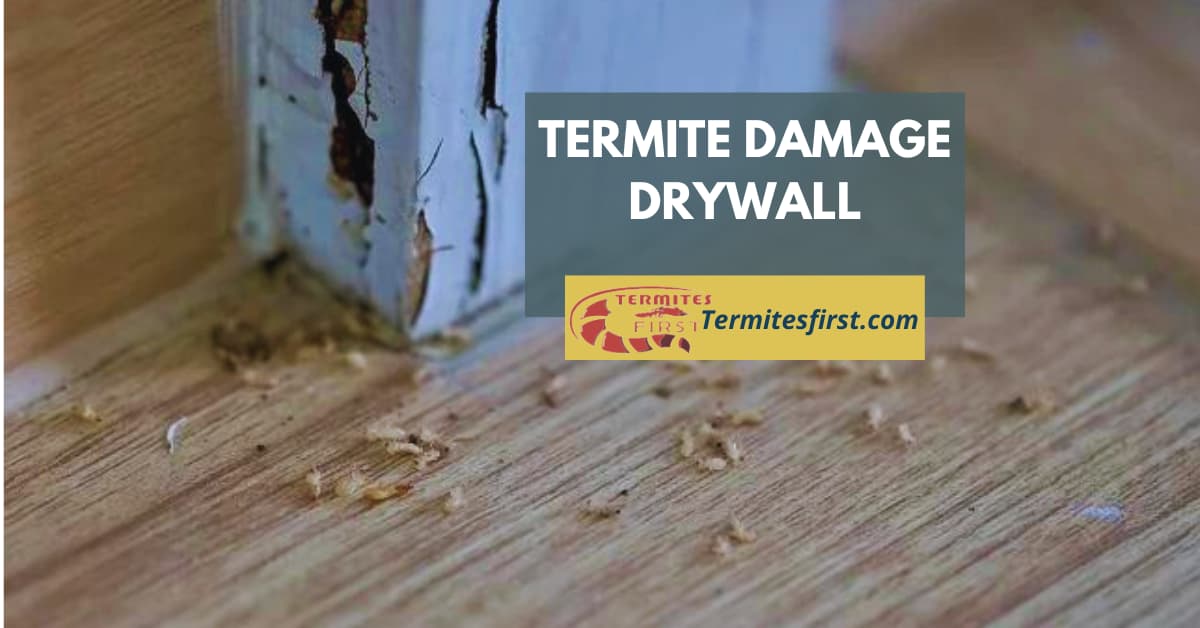
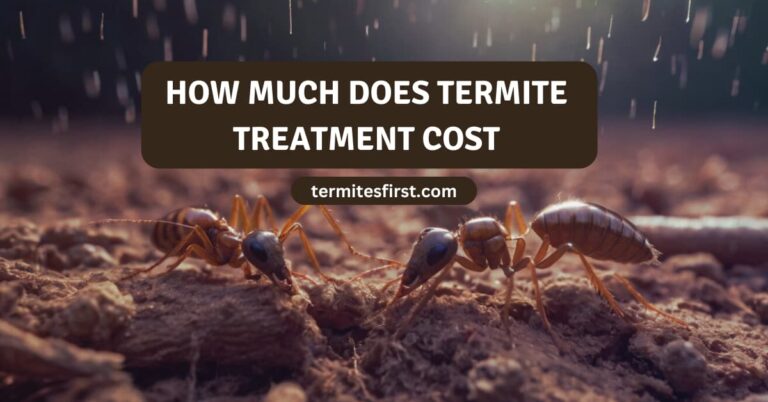

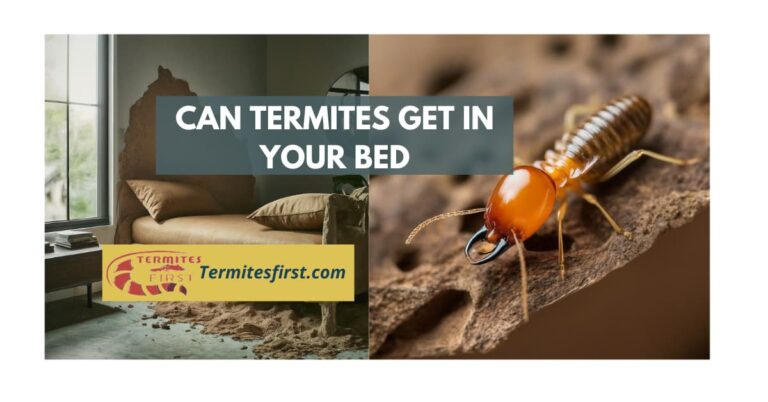
One Comment